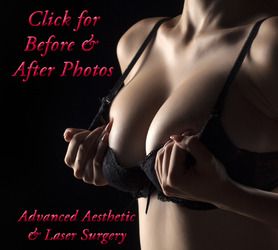Anaplastic Large Cell Lymphoma Columbus OH
 In the past few years, reports have emerged regarding a rare form of lymphoma occurring in women who have breast implants. The condition is known as Breast Implant Associated – Anaplastic Large Cell Lymphoma of BIA-ALCL and is extremely uncommon.
In the past few years, reports have emerged regarding a rare form of lymphoma occurring in women who have breast implants. The condition is known as Breast Implant Associated – Anaplastic Large Cell Lymphoma of BIA-ALCL and is extremely uncommon.
Implicated Implants
At this time, only textured breast implants have been associated with BIA-ALCL. There have been no reports of BIA-ALCL occurring in patients with smooth surfaced breast implants. Textured implants were created initially to reduce the risk of capsular contracture in women getting breast augmentation surgery. They are also used to reduce the risk of rotation of non-round shaped implants. The majority of implants used today are smooth, round implants, which have not been implicated in the formation of BIA-ALCL.
Incidence of BIA-ALCL
It is estimated that 300,000 breast augmentation procedures are performed in the United States each year; 90% of which are smooth implants. As of 2017, there have been 359 reported cases of BIA-ALCL in the US. It is believed that a patient who has textured breast implants has a lifetime risk between 1:1000 and 1:30,000 of developing BIA-ALCL and zero risk for smooth implants. Of the reported cases, on average, patients presented either years after insertion of their implants with a range of 2 to 28 years.
Symptoms
The most common presentation of BIA-ALCL is painless swelling of one breast generally due to accumulation of fluid in the capsule around the implant. Less common is the development of a lump in the breast or armpit. If there is a suspicion of fluid accumulation in the implant pocket, an ultrasound is the best test to determine its presence.
Treatment Recommendations
The American Society of Plastic Surgeons (ASPS) and The American Society for Aesthetic Plastic Surgery (ASPAS) both recommend removal of the implants, capsules and any detectable tumor present outside of the capsule. The majority of patients who present with BIA-ALCL have tumors confined to the capsule and require only implant removal and excision of the capsule (capsulectomy). So far, all patients who have confined tumors treated in this fashion have been cured of their disease.
BIA-ALCL Cause
At this time, the cause of BIA-ALCL is unknown. Numerous organizations including the FDA and ASPS are searching for answers. Factors that have been theorized to potentially be implicated in the development of BIA-ALCL include bacteria, prolonged inflammation, textured implants and possible genetic predisposition. It is likely that the cause is multi-factorial.
Asymptomatic Patients
After reading about BIA-ALCL, it is not uncommon for patients who have textured implants to ask whether or not they should have them prophylactically removed. Because the incidence of BIA-ALCL is so low, it is not recommended to have them removed in someone who is not having any symptoms. If you are considering getting implants of a different size or having a breast lift, that would be a good time to change to smooth implants.
If you have implants and do not know if they are smooth or textured, you should contact your surgeon to find out the implant that you have, the manufacturer of the implant and the size.
Why Texture Implants?
Until the late 1980's virtually all breast implants had smooth surfaces however, most of these had very thin shells and a relatively liquid silicone gel resulting in 'gel bleed' through the implant resulting in a high percentage of capsular contracture. Polyurethane foam covered implants became all the rage in the late 80’s and early 90’s as they seemed to significantly reduce the risk of capsular contracture. At the time of the silicone controversy in 1992, it was discovered that polyurethane causes cancer in rats so those implants were taken off of the market. In an attempt to obtain similar reduction in capsular contracture rates, implant companies came out with implant texturing of the surface mimicking the texture of the polyurethane implants.
Another reason to texture implants is to prevent rotation of the implant. While rotation of a round implant is not an issue, there is a wide variety of shaped implants available now that can look abnormal if they move or rotate out of position. Texturing of the implant surface allows scar tissue ingrowth into the interstices of the implant surface significantly reducing the risk of implant rotation.